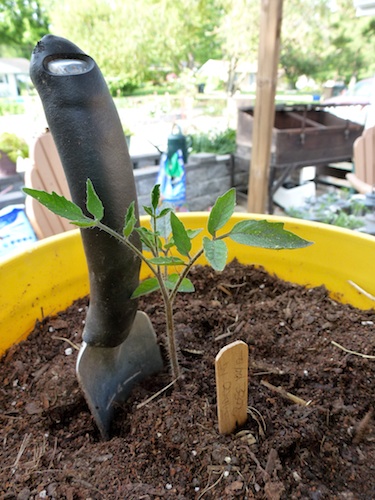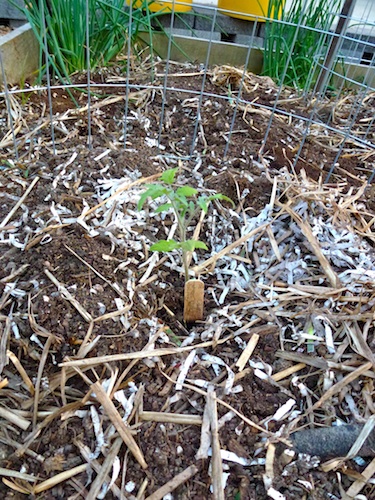- HubPages»
- Home and Garden»
- Gardening»
- Planting Vegetables
Top Tomato Tips: How to Plant Tomatoes
Leave Only Top 3-5" Exposed

Early Tomato Care Produces Bountiful Results
Tomatoes are America's number one home garden vegetable. If you have room for just one crop, plant a tomato. Once a tomato starts producing, the gardener has tomatoes all season, until that first frost.
The key to a healthy tomato plant is healthy soil. Work organic matter into the soil before planting. After the tomato is planted, mulch for weed suppression and water conservation. Getting young transplants off to a good start will produce the most abundant harvests.
Choose tomato plants without any blooms or fruit. If there are blooms or fruit remove them. Give your plant time to establish a strong root system and healthy leaves. That early fruit will be disappointing and tasteless, so remove it before transplanting to the garden.
Only plant tomato plants early if you love the drama of running out and covering them up at every possible threat of frost. Or, wait to move plants into the garden after all danger of frost. Tomatoes will start growing vigorously when nighttime temperatures remain above 50 degrees.
There really is no advantage to buy big or tall (leggy) plants. Plant the tomato deep. Pinch of lower leaves and leave only the top 3-5 inches of the plant above ground. Deep roots will develop along the buried stem, helping the plant through the coming hot, dry season.
If cutworms are a problem, protect the base of the plant with a half of a toilet paper tube or a collar of waxed paper planting the collar 2 inches above the ground and 1 inch below.
Cage or Stake Tomatoes When You Plant Them

Tomato Supports
Spacing
Trying to grow plants in close quarters will not result in more tomatoes. Space smaller tomato plants at least 2 feet apart. For the big, indeterminate plants, space 3 feet apart. Giving tomatoes plenty of room will prevent many disease outbreaks.
This year, I'm going to grow some big tomatoes and I am giving them plenty of room. I've chosen varieties that are known for producing large fruit. The plant stakes and cages go in as the little tomato is transplanted into the garden.
Stakes or Cages
Staked plants are less likely than unstaked plants to get diseases. Staking also improves yield, fruit set, fruit quality and makes harvesting easier.
Try a variety of methods for caging and staking tomato plants. Once you invest in a solid plant support method, you can use it for years with no additional expense. There are also several staking methods that are very economical. All University Extensions have helpful information on line. For example: G6461 Growing Home Garden Tomatoes - University of Missouri ...
I like using an 8 foot tall wooden stake. Pointed at one end, a 1 x 2-inch wooden stake will last for several seasons. Pound into the ground until it is sturdy and straight. Use soft cord or twine to tie the plant to the stake always leaving a little extra room for plant growth.
Consider winter storage space when choosing a tomato support method. For example the wooden stakes will last longer if stored in a dry area for the winter. Collapsible tomato cages are a cinch to store.
Gardeners can also use cylindrical wire cages. Mesh should be wide enough for a person's hand to fit through to pick ripe tomatoes. This method saves time required for staking, pruning and tying. If you grow several tomatoes, winter storage space may be a consideration.
Most heirlooms are Large-vined or indeterminate tomato varieties. These big plants will benefit from pruning out some of the auxiliary or side shoots to keep the plant from becoming too bushy or too tall. Remove side shoots to allow good light and air movement.
Be sure to give your new transplant a healthy drink of water.








